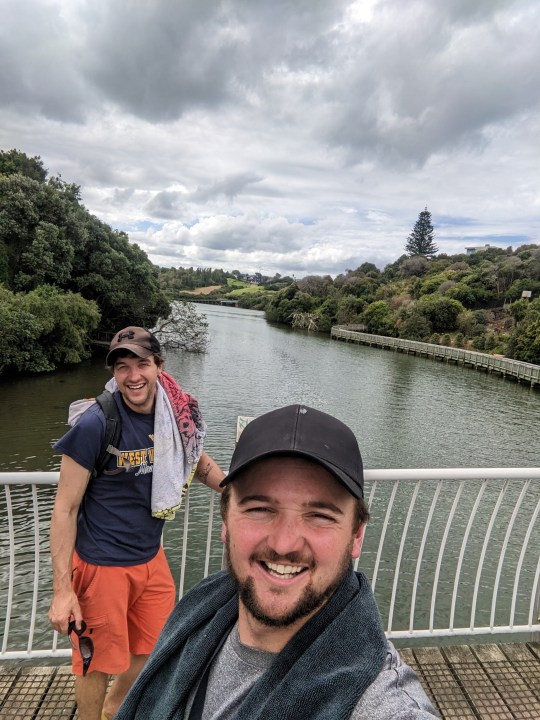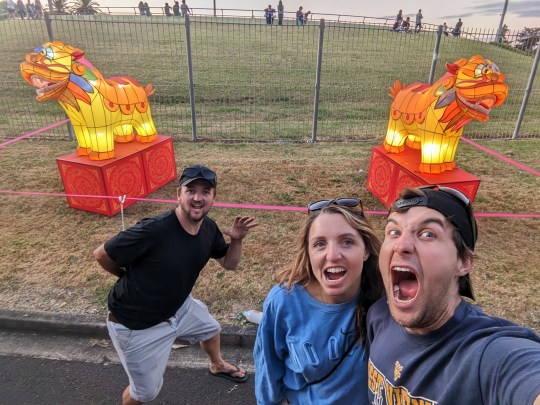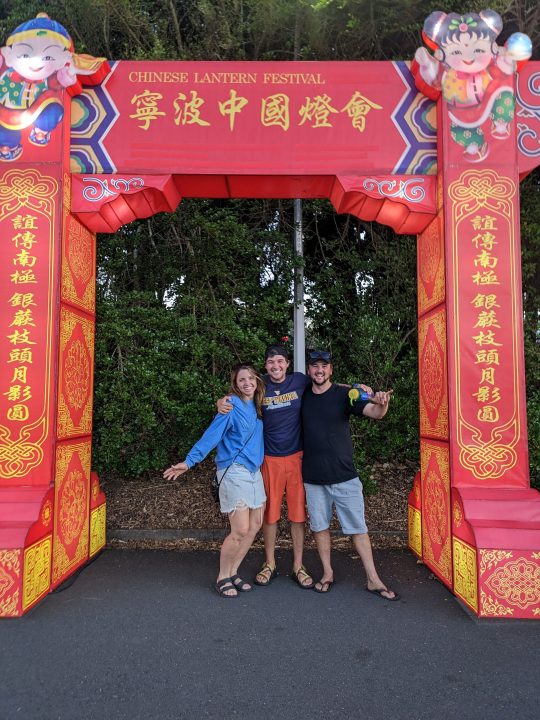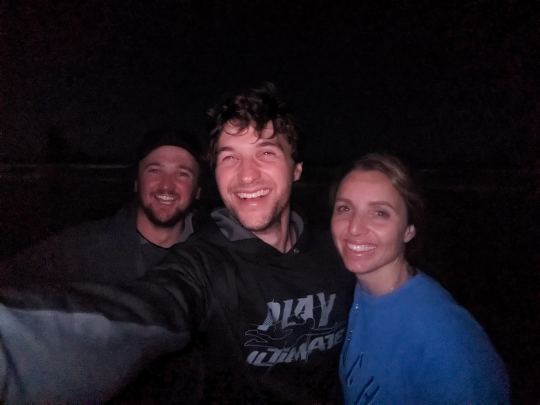#int. elise
Explore tagged Tumblr posts
Text

little goody two shoes has a GRIP on me i tell you. got inspired by this art to make a full furry au about it
#lgts#little goody two shoes#elise liedl#elise lgts#elise being a wolf has layers i tell you LAYERS#lives on the edge of town... shunned by the local people unless shes useful.... little red riding hood motif.....#NOT TO MENTION#leading a loved one into the woods to be sacrificed by a demon is very wolf devouring innocent girls int he woods vibes to me#all the village people r either herbivores or more domesticated animals to contrast as well :3c#my art#fanart
33 notes
·
View notes
Text
@eternallyserpentinebutterfly continued from ☆
I wonder if she's a book worm?
Kenji smiled to himself, seemingly satisfied with his newfound plan on how to approach her. His hands brushed his hair into place, straightening out his clothes before 'casually' walking up to the woman. He glanced down at the book in her hands. It was dumb of him to hope that it'd be something that he recognized -- he hardly read himself -- but maybe she'd be down to talk about it if asked.
He waved his hand with a contrived grin.
"Hey there.! Sorry to bother you but, if you don't mind me asking, what're you reading?"
5 notes
·
View notes
Text
@touchbased sent 5c from this meme !

"don't—" the plea dissolves into a dry laugh as elise leans forward on her elbows, away from the taunting of the toy (and the woman wielding it) behind her. "don't fucking tease, mar. i was nice!" and by 'nice' she means she'd only denied her one orgasm so far. pushing her hips back again, she peers over her shoulder tentatively. "please?"
#i just know these two are power struggling in bed and elise almost always loses#she's got babygirl syndrome she can't help it#( int/ elise becker. )#( pair/ elise & mariana. )#remaineds
4 notes
·
View notes
Text

HALLO MY NAMES ELISE !!! XD
I dunno how to use this app yeek but I wanna use too since everyone is using it!! If Chuuya-kun and Rintarou can use I can use too!

> Elise will use She/her , the owner of the account uses he/it.
> BE CAREFUL with nsfw questions! (Do not send sexual things. Elise is a kid.)
> I do block ○3○
> Yes, I know Elise is not a kid, but she will be a kid on this acc and haves the mentality of one.
Same mod as @lippythepup , @voyagemerveilles and @corpse-to-ability ! mods main acc is @syunkiss !!!

Names Elise!
I like a lot of things XD but I like pink, blue, red, sweetsies and hanging out with Chuuya and Kouyou!! Rintarou is annoying! I dont like him! /nsrs
How can I interact with you all? Eh? I want to make NEW friends but I cant find anyone! (>n<)
Bai bai !!


#bsd rp blog#bsd rp#bungou stray dogs#bungo stray dogs#bsd#elise bsd#elise#bsd elise#bsd elise rp#elise bsd rp#bsd rp acc#ooc#pls int#bsd fandom#rp account#roleplay#rpg#bungou gay dogs#pls interact
8 notes
·
View notes
Text
"i dunno.... i think there are still a handful of people worth killing here first." luna wasn't too far off, though. bored hadn't crossed the killer's mind but exhausted? elise was certainly feeling that. between the cops closing in on her and a cult-like interest in the case, she was finding it harder and harder to account for her disappearances and odd behavior. it was only a matter of time before those close to her (luna in particular) started to take notice. "it must be stressful, don't you think? living with a secret like that? i wonder if they've got anyone they can talk to about it...."

open: m/f/nb!
plot: there have been a series of m.urders in the area and it’s got ppl spooked, one or both of our muses could be involved or be the next target(s), idk go wild sjsjk
muse: luna artez, carefree (read: aimless) youngest child with too much attitude for her size, kind of like a chihuahua
“come on — they can’t seriously expect everyone to stay locked in their houses forever. it’s been, like, three weeks. whoever was chopping people up probably got bored and moved on to some other s.hitty little town.”

#it's giving exhausted serial killer abt to beg her bff to start helping her bc she's spread thin#she said there's something so intimate about besties killing together i think we should try it xoxo#( int/ elise becker. )#( pair/ elise & luna. )#lvciddreamt
13 notes
·
View notes
Text
Yumeko Jabami (Kakegurui) ID Pack
[PT: Yumeko Jabami (Kakegurui) ID Pack].

[ID: A purple thin line divider shaded at the bottom. End ID].
Names
[PT: Names].
Ace, Ante, Beatrix, Bella, Benedict, Blair, Bliss, Bonnie, Carmine, Carwen, Casino, Chance, Crimson, Dahlia, Delyth, Diamond, Doyle, Elise, Fay, Felicity, Felix, Florin, Fortuna, Gamble, Gwyneth, Jackie, Jasmine, Joker, Karma, Lilith, Lira, Lucy, Macarius, Monique, Morrigan, Nyx, Penny, Queen, Raven, Risk, River, Rouge, Roulette, Thrill, Triss, Velvet, Vincent, Yulia, Yvette
Pronouns
[PT: Pronouns].
Ace / Aces / Aces, Bet / Bets / Bets, Blu / Blush / Blushs, Ca / Card / Cards, Chance / Chances / Chances, Chi / Chip / Chips, Di / Dice / Dices, Fa / Fate / Fates, Flush / Flushs / Flushs, Game / Gamble / Gambles, Impulse / Impulses / Impulses, Int / Intense / Ints, Luck / Lucks / Lucks, Risk / Risks / Risks, Suit / Suits / Suits, Thrill / Thrilled / Thrills, Wi / Win / Wins
Titles
[PT: Titles].
[Noun] in Pursuit of the Ultimate Gamble, [Noun] Who is All In, [Pronoun] Collecting Thrills, [Pronoun] Reveling in Ruin, [Pronoun] Who Delights in Risk, [Pronoun] Who Lives for the Game, The [Noun] Who Bets [Pronouns] Life, The Cheerful Facade, The Compulsive Thrillseeker, The Gambling Frenzy, The High Stakes Player, The Sweetest Gamble, The Wild Card

[ID: A purple thin line divider shaded at the bottom, End ID].
Requested by @socially-anxious-wizard, my bestie <3
Also tagging: @id-pack-archive
#yumeko jabami#kakegurui#id pack#npts#npt pack#npt#npt list#names pronouns titles#name suggestions#pronoun suggestions#title suggestions#neopronouns#neopronoun suggestions
7 notes
·
View notes
Text

Sources and reading tips
At SAC’s courses and conferences, you get the most up-to-date reading tips on concrete trade union work. The books and articles listed below should be seen as a Swedish smorgasbord to pick from. You don’t have to consume the entire list to become a workplace organizer. Below are listed sources and reading tips related to each part of the book. They are available on the internet, at libraries, through the SAC publishing house Federativ and at the bookstore Syndikalistiskt forum. You can obtain SAC’s governing documents from your Local (LS) or digitally on SAC’s website (www.sac.se). Quotes in this book that were originally formulated in Swedish have been translated into English. The sources from where the quotes are derived are accounted for below.
syndikalisten.sac.se/
www.arbetaren.se
www.federativsforlag.se
www.syndikalistisktforum.se
1. Guidelines for local organizing
See the SAC website (www.sac.se) to read:
Basic bylaws for all operating sections
SAC Union program of 2006
SAC Tactical statement of 2009
SAC Declaration of principles of 2009
Contact the SAC Secretariat to order these inquiries:
SAC:s Könsmaktsutredning (Gender power inquiry). Completed in 2010 by Linda Magnusson, Viveca Nording, Ida Pettersson and Bea Rimmerfors. Record number 10–098.
Mobiliseringsutredningen (Mobilization inquiry). About successful union organizing. Completed in 2018 by Frederick Batzler. Record number 18–065.
Strategiutredningen (Strategic inquiry). An answer to the 2019 Swedish anti-strike law. Compiled in 2020 by the SAC Legal Committee. Record number 20–105. Available to members here: www.sac.se/strategiutredningen. The website also has video lectures, articles, a pocket guide, etc. based on the Strategic inquiry.
Apans anatomi (podcast) (2020). Organisera, inte bara mobilisera. Interview with the syndicalist Daria Bogdanska: soundcloud.com
Bohlin, Rebecka (2005). XX — Feministiska samtal, idéer och utbrott. Federativs förlag. A collection of articles from Arbetaren.
Bonk, Erik (2021). “Arbetsplatsorganiserng” in Syndikalisten, online edition:
syndikalisten.sac.se. A series of basic articles.
Bonk, Erik & Hästbacka, Rasmus & Stendahl, Jenny (2021). “Ny strategi på galen arbetsmarknad” in Arbetaren, online edition: www.arbetaren.se
A summary of SAC’s Strategic inquiry of 2020. In English below.
Bonk, Erik & Hästbacka, Rasmus & Stendahl, Jenny (2021). “A syndicalist strategy for the Swedish labour market” on the website Counterpunch: www.counterpunch.org
Bradbury, Alexandra & Brenner, Mark & Slaughter, Jane (2016). Secrets of a successful organizer. Detroit: Labor Notes. See also: www.labornotes.org/. The book will be published in Swedish by Federativ in the autumn of 2021.
Broberg, Emil & Hästbacka, Rasmus (2021). “Fackliga myter om kollektivavtal skadar löntagarna” in Arbetaren, online edition: www.arbetaren.se
Calleman, Catharina (2020). Genusperspektiv på arbetsrätten: en annan historia. 2. uppl. Uppsala: Iustus förlag.
Class Power on Zero-hours [yellow edition]. New preface. 2. uppl. London: AngryWorkers. A group of workers in London writing about their organizing while also doing it.
Falk, Kristian & Hästbacka, Rasmus (2021). “Hitta alternativ till strejk” in Arbetaren, online edition:
www.arbetaren.se. About destructive fixation on strikes.
Fransson, Susanne (2020). “Hundra år av kvinnostrejker”. A video lecture:
youtube.com
Hamnarbetarförbundet 50 år. A documentary project about the Swedish Dock Workers Union:
hamn.nu
Hästbacka, Rasmus (2021). “Sex myter om facklig kamp” in Arbetaren, online edition:
www.arbetaren.se
Lindblom, Julia (2021). Amazon: bakom framgången. [Stockholm]: Verbal.
Lynd, Staughton m.fl. (2015). Solidarity unionism: rebuilding the labor movement from below. 2. uppl. Oakland: PM Press.
Ottesen-Jensen, Elise (1980). Arbetarrörelsen — männens eller mänsklighetens rörelse? Ett urval av Elise Ottesen-Jensens kvinnopolitiska artiklar i Arbetaren och Brand på 20-talet.
Sahlström, Olle (2008). I skuggan av en storhetstid. Stockholm: Atlas. A book about the decline of European trade unions from movements to bureaucracies and new organizing initiatives.
Sjöö, Ingemar (2011). Fackliga fribrytare. Episoder från hundra år av svensk syndikalism. [2., uppdaterade uppl.] Stockholm: Federativ. The quote from French CGT in this book can be found in Sjöö’s book on page 34.
Slaughter, Jane & Ancel, Judy (red.) (2005). A troublemaker’s handbook. How to fight back where you work and win! Detroit: Labor Notes.
Tillsammans: gemenskap och klasskamp på samhällsfabrikens golv. En antologi. By the group Kämpa tillsammans! (2009). Lund: Pluribus.
Tuuloskorpi, Frances (red.) (2010). Hopsnackat: folkrörelse på arbetsplatsen. D. 1 En antologi. 2. uppl. Norsborg. As an ebook here: folkrorelselinjen.wordpress.com
Wikander, Ulla (1997). Delat arbete, delad makt: om kvinnors underordning i och genom arbetet. En historisk essä. 7. uppl. Uppsala: Uppsala univ. Can be found as a PDF file here: uu.diva-portal.org
2. The idea of the class organization
See the SAC website (www.sac.se) to read:
Basic bylaws for all Locals (LS) of SAC
SAC’s Organization plan with industrial guidelines
1906 Charter of Amiens
1913 London Declaration
IWW Declaration of principles in the form of a Preamble to the IWW constitution (originally adopted in 1905). Available here: iww.org/
Ahrne, Göran, Stöber, Niels & Thaning, Max (2018). Klasstrukturen i Sverige: Struktur, klass och inkomster. Kontinuitet och förändring 1985–2015. Stockholm: Katalys. Can be found as a PDF file here: e-arkiv.arbark.se
Anarcosindicalismo: Basico by CNT Sevilla. A pamphlet, translated into English by Jeff Stein and it can be found as a PDF file here: libcom.org
Arbetarhistoria www.arbetarhistoria.se
Issue 14–15. Tema: Syndikalismen
Issue 87–88. Syndikalismen — historiska erfarenheter
Bakunin, Michail (1869). “The policy of the International”, originally published in the paper L’Égalité in 1869. The quote from Bakunin in this book can be found in the second paragraph of the article, which is available here: dwardmac.pitzer.edu
Bantman, Constance & Berry, Dave (red.) (2010). New perspectives on anarchism, labour and syndicalism. The individual, the national and the transnational. Newcastle: Cambridge Scholars Publishing. The book can be found as a PDF file here: libcom.org
Bogdanska, Daria (2016). Wage slaves. Stockholm: Galago. A graphic novel.
Casparsson, Ragnar m.fl. (1923). Vad är och vad vill syndikalismen? Stockholm: Federativ. Three introductory texts that are still relevant. The book can be found as a PDF file here: www.sac.se
Chomsky, Noam (2017). Requiem for the American Dream. New York: Seven Stories Press. The quote from The Mill Girls of Lowell in this book can be found in Chomsky’s book on page 121. Originally taken from their publication Factory Tracts in 1845.
Dahlgren, Edvin (2018). “Val 2018: Bygg facket och erövra städerna!” in Arbetaren, online edition: www.arbetaren.se/2018/09/07/val-2018-bygg-facket-och-erovra-staderna/. An essay about what has been called rörelsesocialism in Swedish (movement socialism), with a focus on the 21st century.
Dahlkvist, Mats (1999). “Den instängda demokratin. Rörelsesocialism och statssocialism i svensk arbetarrörelse” in SOU (1999:112), pages 7–68. This article is available here: www.regeringen.se/
Ek, Anders (2000). Arbetarklassens kampproblem. Syndikalism — reformism. Ny utg. Göteborg: Nisse Lätts minnesfond. The quote by Anders Ek in this book can be found in Ek’s book on page 15.
Furuland, Lars (red.) (1999). Arbetarförfattarna och syndikalismen. Stockholm: Federativ.
Garneau, Marianne & Lee, MK (2020). “The leftwing deadbeat” on the website: organizing.work
Hästbacka, Rasmus (2020). “Gör ekonomisk demokrati folkligt igen!” in Arbetaren, online edition:
www.arbetaren.se/2020/05/29/gor-ekonomisk-demokrati-folkligt-igen/
Lagerström, Sven (1996). Syndikalismen: en grundbok. 3.uppl. Stockholm: Federativ.
Lindberg, Ingemar & Neergard, Anders (red.) (2013). Bortom horisonten: fackets vägval i globaliseringens tid. Stockholm: Premiss. Contains both case studies and theoretical reflections.
Lundh, Christer (2008). Arbetsmarknadens karteller: nya perspektiv på det svenska kollektivavtalets historia. Stockholm: Norstedts akademiska förlag. The author describes trade unions as a force against underbidding competition.
Montgomery, David (1987). The fall of the house of labor: the workplace, the state and American labor activism, 1865–1925. Cambridge: Cambridge Univ. Press. The book illuminates, among other things, the popular support for economic democracy.
Pack, Spencer J. (1991). Capitalism as a moral system. Adam Smith’s critique of the free market economy. Aldershot: Edward Elgar. The quote by Adam Smith in this book can be found in Spencer’s book on page 129.
Price, Wayne (2015). “Murray Bookchin: Anarchism without the working class” on the website:
www.anarkismo.net. A critical examination of the eco-anarchist Bookchin.
Price, Wayne (2018). “An anarchist view of the class theory of the state” on the website:
blackrosefed.org
Svärd, Per-Anders (2020). “En grön Lenin?” in Arbetaren, online edition:
www.arbetaren.se. A review of Malm, Andreas (2020). Corona, climate, chronic emergency: war communism in the twenty-first century. Brooklyn: Verso Book.
Tuuloskorpi, Frances (2011). “Vi behöver inte upprop, vi behöver nedrop!” in Brand issue 2/2011 and available here: tidningenbrand.se/. About conflicts between class organizing and the political left.
Wright, Erik Olin (2012). “Att förstå klass” in Wennerhag, Magnus m.fl. (red.) Fronesis issue 40–41 Klass. Stockholm: Fronesis. A leading Marxist sociologist and researcher writing on social class.
3. Recruit and activate members
See the material in SAC’s plan for study groups entitled “Bli en arbetsplatsorganisatör!” (“Become a workplace organizer!, Swedish abbreviation: APO-cirkeln). Retrieve this from your Local of SAC or by logging in to the SAC website (www.sac.se/user/login).
Hill, Niklas & Sjöström Hederberg, Angeli (2014). Medlemsmodellen: rekrytera, aktivera och behålla medlemmar. 3. uppl. Stockholm: Trinambai.
Hästbacka, Rasmus (2021). “Att bygga fler LS inget självändamål” in Arbetaren, online edition:
www.arbetaren.se
Debate on the future of SAC with links to previous articles by Toivo Jokkala and Gabriel Kuhn.
Bewernitz, Torsten & Kuhn, Gabriel. “Syndicalism for the Twenty-First Century: From Unionism to Class-Struggle Militancy” on the website Counterpunch:
www.counterpunch.org. Related to the debate on the future of SAC above.
Hästbacka, Rasmus (2021). “Greetings from Sweden: A dual-track syndicalism?” on the ASR website: syndicalist.us.
Related to the debate above.
4. Economic democracy and federalism
See SAC’s website (www.sac.se) to read the 1922 Declaration of principles and the current documents. See also the interpretation of the 1922 Declaration of principles.
Ackelsberg, Martha A. (2005). Free women of Spain: Anarchism and the struggle for the emancipation of women. Oakland: AK Press. The book can be found as a PDF file here: libcom.org
Albert, Michael (2004). Parecon: livet efter kapitalismen. Stockholm: Ordfront. The word “parecon” is an abbreviation of the English term “participatory economics”. See also: participatoryeconomy.org/
Albert, Michael (2021). No bosses: a new economy for a better world. Washington: Zero Books.
Andersson, John (1952). Internationalerna. Stockholm: Federativ. The quote from the First International in this book, originally from a book by the feminist Flora Tristan (1803–1844), can be found in Andersson’s book on page 5. See also Tristan’s book below.
Castoriadis, Cornelius (1972). Workers’ councils and the economics of a self-managed society. London: Solidarity Group. The book can be found as a PDF file here: libcom.org/
Chomsky, Noam (1989). What was Leninism? An excerpt from a lecture, filmed in Wisconsin, USA: www.youtube.com. About anti-socialist “state socialism”.
Doyle, Kevin & Chomsky, Noam (1995). “Anarchism, Marxism & hope for the future” in Red & Black Revolution issue 2. Doyle interviews Chomsky. Available here: theanarchistlibrary.org
Eriksson, Jan (red.) (1971). Syndikalistisk syn på ekonomisk demokrati: en skiss. Stockholm: Federativ. The book can be found as a PDF file here: www.sac.se
Gröndahl, Britta (red.) (2006).“En ny värld i våra hjärtan”. Här talar syndikalisterna. Gävle: Federativ. The quote by Rudolf Rocker in this book can be found in Gröndahl’s book in the section “Syndikalismens metoder” (The methods of syndicalism).
Hahnel, Robin (2012). Of the people, by the people. The case for a participatory economy. Oakland: Soapbox Press. A short and accessible presentation of participatory economy.
Hahnel, Robin (2021). Democratic economic planning. Abingdon: Routledge. The author addresses the problems of large-scale planning and long-term social investments.
Hedin, Bengt (1969). Federalismen — i en socialistisk ekonomi. Stockholm: Stockholm LS. A short pamphlet originally published in 1939 by Federativ. Available as a PDF file here: www.sac.se
Hästbacka, Rasmus (2020). “En annan värld är löjlig?” in Arbetaren, online edition:
www.arbetaren.se/2020/07/08/en-annan-varld-ar-lojlig/
Le Guin, Ursula K. (1994). The dispossessed: an ambiguous Utopia. New York: Harper Prism. A science fiction novel about attempts to build free and equal societies.
Lorenzo, César M. (1972). Syndikalismen vid makten. Spansk anarkosyndikalism före, under och efter inbördeskriget 1936–39. Stockholm: Federativ. A biased inquiry that can be read together with other polemical writings, for example the pamphlet by Friends of Durruti (1978), Towards a fresh revolution. As a PDF file here: libcom.org
Lund, Arwid (2001). Albert Jensen och revolutionen: syndikalismens revolutionära idéer 1900–1950. Stockholm: Federativ.
Pannekoek, Anton (2003). Workers’ councils. Introduction by Noam Chomsky. Oakland: AK Press. The book can be found as a PDF file here: libcom.org. Pannekoek was one of the foremost educators within council communism.
Pateman, Carole. (1975). Participation and democratic theory. Cambridge: Cambridge Univ. Press. The political scientist Pateman is inspired by syndicalism, guild socialism and the liberal John Stuart Mill.
Persson, Lennart K. (1993). Syndikalismen i Sverige 1903–1922. [Ny utg.] Stockholm: Federativ. See in particular Chapter VIII.
Rocker, Rudolf (1920). “The Soviet System or the Dictatorship of the Proletariat?” originally published in Yiddish in the journal Fraye Arbayter Shdme. In English here: theanarchistlibrary.org. About workers’ councils, how the idea arose in the First International and was passed on by, among others, syndicalists. The Russian term for council is “soviet” but the so-called Soviet Union was actually an anti-soviet union.
Russell, Bertrand (2018). Proposed roads to freedom. Reading Classics. Franklin Classic Trade Press. Originally published in 1918. The quote on syndicalism in this book is taken from Russel’s book.
Schecter, Darrow (1994). Radical theories: paths beyond Marxism and social democracy. Manchester: Manchester University Press. A critique of authoritarian Marxism and Leninism. The book deals with syndicalism, anarchism, guild socialism, council communism, market socialism and green post-industrial socialism.
Severin, Frans (1924). Excerpt from Severin’s book Är syndikalismens statsfientlig? in the anthology Sabotage (2006) which is edited by Rikard Warlenius. Stockholm: Federativ, pages 144–218. About syndicalism’s relation to modern nation-states.
Tristan, Flora (2007). The worker’s union. Urbana: University of Illinois Press. A classic socialist and feminist book from 1843.
Westbrook, Robert (1991). John Dewey and American Democracy. Ithaca: Cornell University Press. The quotes from John Dewey in this book can be found in Westbrook’s book on pages 442, 440 and 453.
Wood, Ellen Meiksins (1998). The retreat from class: a new “true” socialism. Rev. ed. London: Verso. The book provides a perspective on the strategic position of workers in production.
Writings on the register method of Swedish trade unions and evolutionary syndicalism:
Falk, Kristian (1997). Från registermetod till producentkooperation: ideologiska perspektiv inom svensk syndikalism 1922–1952. Lic.avh. Stockholm Univ.: Ekonomisk-historiska institutionen.
Falk, Kristian (2012). “Registret i retorik och realitet” i Ett sekel av syndikalism. Sveriges arbetares centralorganisation 1910–2010. Stockholm: Federativ, pages 181–190.
Sjöö, Ingemar (2011). Fackliga fribrytare. Episoder från hundra år av svensk syndikalism. [2., uppdaterade uppl.] Stockholm: Federativ. See chapter VII.
Other sources
As this book is an attempt to capture majority views among active syndicalists, the author has also read a large number of articles in Syndikalisten and Arbetaren and furthermore SAC congressional minutes, especially from 2002 onwards, as well as SAC’s educational material (see: www.sac.se/user/login).
The author has also tried to act as a sampler of contemporary syndicalism by participating in SAC union conferences since 2001, arranging ideology seminars, initiating debates in Syndikalisten and Arbetaren, by participating in an online forum (administered by the Göteborgs Local of SAC and the bookstore Syndikalistiskt forum) and then on the email list SAC-utveckling together with more than 100 active syndicalists.
The first drafts of this book were presented on the mentioned email list in 2015. Responses to drafts were later obtained in SAC’s online discussion forum. The email list has been terminated in favour of the discussion forum.
#reading#suggested reading#book lists#unions#classism#anarcho-syndicalism#anti-left#class struggle#class unions#feminism#feminist unionism#internationalism#popular organization#popular power#post-left#SAC#Sweden#union organizing#swedish politics#anarchism#anarchy#anarchist society#practical anarchy#practical anarchism#resistance#autonomy#revolution#communism#anti capitalist#anti capitalism
1 note
·
View note
Text

"really? i'm actually not sure it's strong enough." but she grants him a small smile, closing the dryer door with a definitive slam. "i think the well-adjusted reaction would be to tell me that i shouldn't be breaking into apartments period, but i really admire you trying to make our chance encounter seem normal in any way..... if i didn't know any better, i'd think you actually enjoyed waking up to the cutest non-armed robber this city's ever seen." which was maybe wishful thinking on said robber's end, but why else would he have engaged her in a conversation? cheeks flushed at the sight of his smirk, elise was quick to turn her back to him. "he played football. in high school, though, he hurt himself senior year and that put an end to that. he coaches now, though, reliving his glory days no doubt....." all more information than he'd asked for, but her nerves had her rambling. "it's about as interesting as it sounds which is.... not very."

tilts his head as he leans against the buzzing washing machine. "i personally believe maladjusted is a strong word." and maybe that's the entire problem. but if the alternative is not having people you can rely on, day or night? well, then maybe he's okay with that. "all i'm saying is, if you're having to break into stranger's apartments because your friend sleeps through all of your calls, that might be a red flag." yeah, finn's taken into to psychology. so he knows all about red flags and gaslighting and shit. chuckles and clicks his tongue as he shrugs. "yeah, alright. i'll give you that. seems like i have to meet this famous angela, though. make my own decision." because that's the way to a girl's heart, right? impressing her friends? "don't worry, it'd take a lot more than some intruder to make me lose." smirk is cocky as it always is. "what does he play?"
10 notes
·
View notes
Text
ik i just made a lil int call but what if i made a proper starter call huh-
mainly for the muses below cut bc they're the most awake teehee
hardgore alice / ako hatoda
daisuke niwa
dark
elise liedl
2 notes
·
View notes
Text
23 February 2024 - Woke up in Piha at Elise's house. She had to work today, so we got up together around 6:15 am. We left her house around 7, me on my motorbike headed home and she in her park ranger uniform headed to work. I had a really great sunrise ride from Piha back to Henderson. I'm feeling more comfortable on the motorbike and more confident with the windy roads to and from Piha. They're fun to drive now, instead of scary. When I got to Henderson I was surprised to find that Arnie and Jimmy were both still asleep. Usually, they're both early-risers, but today I was up before them; needless to say, this is VERY rare 😅. I started making pancakes, something that I'd been talking about for a while. I cooked us up some blueberry pancakes, and the three of us, Jimmy, Arnie, and me, sat out on the back porch and started feasting on blueberry pancakes, banana slices, peanut butter, and Canadian maple syrup. Uncle Mitch came over from next door, and I offered him dinner pancakes; he said, no, that he'd just eaten. I got him a plate, and threw a pancake on it. After he finished the pancake, he grabbed a second one! All morning, those three were doing their best American accents talking about American pancakes 🤣 I love when they do their American accents!

After breakfast, Jimmy asked me to join him on some missions. I ALWAYS say yes to Jimmy's missions. I got in his car, and we ran a few errands. We got back home at noon, and he got a call from his work, saying that he had the afternoon off too! We went on some more missions. We bought some plants for Jimmy's vegetable garden at the local Bunnings (New Zealand's Home Depot). I planted all his plants in his vegetable garden and watered them. Hopefully they do okay.


Jimmy's really excited for Maddie to watch the garden grow. Jimmy had a bunch of chicken sausages, and I cooked those up for us. The three of us ate lunch together on the back porch.

Jimmy and I grabbed swimmies and towels and got in Jimmy's car for more missions. Jimmy had a bunch more errands to run, but eventually wanted to end up in south Auckland to go to the Chinese new year festival at the manakau sports bowl. I don't really know what I'm getting into whenever I volunteer to go on missions with Jimmy. He's got a plan, but I know what that plan is maybe 50% of the time 😅. We went to Judge's Bay and Orekei and walked around there. Jimmy showed me a couple places he likes to go to relax and get away from the hustle and bustle of the city.


We went to Joshy's house to drop off some petrol. We said hi to Joshy and Essence and the doggos, Nala, Tahi, and Ace. But we didn't stay long.

We drove to Jimmy's work to park the car, and Elise was there waiting when we arrived. The three of us caught a bus from Jimmy's work to the Chinese new year festival. We walked around and took photos of the intricate lanterns.





Jimmy bought a box of 40 donuts that we all snacked on. After spending a good long while there, we headed back to the bus stop. We waited for the bus for close to an hour, but it never came! So we got an Uber back to Jimmy's work. I drove Jimmy's car and Elise drove her car back to my house. Elise had coordinated and arranged to have sole use of the Keddle House, a cabin inside her regional park that people can't rent out. Usually, to reserve the Keddle House, one has to put in for it six months in advance, but because Elise is a park ranger, she was able to snag it for a couple days (there was a last-minute cancellation). In New Zealand, they call a beach house like the Keddle House a "bach." At my flat in Henderson, we grabbed some blankets and some clothes, and then we drove to Anawhata, to the Keddle house. When we got to the Keddle house, it was already very late. But, YOLO, so we walked all the way down to the beach. Immediately upon arriving at the beach, we saw a shooting star. That's three walks to the beach with Elise, and we saw a shooting star each time. We howled at the full moon. We sunk our feet into the soft sand and enjoyed the magic of the night.

We walked back up to the bach and passed out.
I'm grateful for Jimmy. I'm grateful for his friendship, for his positivity, for his trust, and for his kindness. I'm grateful to go on missions with him and to help him with his vegetable garden because I know he's always looking after me too. Getting to help him plant his vegetable garden is an easy way to reciprocate and show my love and gratitude. I'm grateful for Elise. I'm grateful for her organizing and coordinating us staying at the bach!
4 notes
·
View notes
Text
closed starter for @lilacwiine plot: linked in source! (she's not homeless but she IS a grifter so it's only right they scam the scammer right back!!)

she'd just settled in to the california king with sheets that cost more than her rent when the sound of the electronic lock clicking in the hotel door sank her heart down to the pit in her stomach. scrambling out of the bed, elise just managed to bring herself to her feet when they rounded the corner, and the immediate panic didn't bode well for her. "oh, my god.... they must've given me the wrong room key. is this not suite 605?"
#bold faced lying when their room number is probably 721 like just not even close#she's so smart unless she's in a pinch awful skill for a thief to leave underdeveloped#( int/ elise becker. )#lilacwiine
0 notes
Text
"the problem is that the lie is getting to be more trouble than it's worth." which doesn't come out quite the way she means it, though she'll blame that on june how defensive she suddenly feels. "i just mean—— like, wouldn't it be easier to break up with them?? it's not about fucking karma and it's not about who's right—" though, for the record, she still thought she was. "i just think we'd have more fun if i wasn't constantly looking over my fucking shoulder or trying to explain why you're staying over at my place again instead of theirs...."

" exactly. " the word is a sneer more than anything else, hands gesturing in abject exasperation. " so what's the fucking problem, baby ? you want to fuck me, i want to fuck you-- we're both shitty, terrible people for doing it but we still do it anyway. " june sighs, lets herself flop back onto elise's bed. " feeling bad about it isn't gonna do shit for your karma, anyway. "

4 notes
·
View notes
Text

"You're stupid. I like that in a man."
I had to redraw this meme as soon as I found out Vail's INT is a 50 XD (for reference, Lei's INT is 80)*
I love them together so much 🥺🥺🥺 I used to clown Lei for having bad taste in men (Vail LOL because he seemed super flaky due to him having 0 screen time but it turns out he's really good to her??? He's just a very very busy man 😔😔😔). I also like how he's a short king BUT IT TURNS OUT HIS SIZ IS 65 and LEI'S SIZ IS 50 XDDD but since the DM said he's only a few cm taller I will believe in the Vail short king canon-ity (I'm going to estimate he's like 165cm though XD -- Lei is 158.5cm which she justifies is basically 159cm which is basically 160cm XD. She wears lots of heels for a reason XD) This was supposed to be a quick little sketch but y'know I haven't had much time to draw so after cleaning up the sketch for the lines I started the flats... and then I started rendering.. .and then for some ungodly reason I decided to draw a cyberpunk cityscape for the background WHICH MEANT OF COURSE I HAD TO DO THE APPROPRIATE FILTER + LIGHTING FOR IT 😭😭😭 SO HERE I AM LIKE 5 HOURS LATER 🤡🤡🤡💀💀🤡🤡🤡 I'm clowning too hard I have no time to draw nowadays... man...
Details I am proud of here: Lei's hand!!! I always struggle with hands but I spent a lot of time + effort this time and looked at a bunch of refs! Of course putting the effort into the lighting/BG is another one! BUT a very cool detail I included is that Vail's ear tips are red 😳😳😳 cute, right? They're so cute together 🥺🥺🥺 *80 is the usual max, but for some strange reason, her doctor friends Elise and Ceres have INT of 85 and 90 respectfully! This is very sus!!! (But there's apparently lore reasons why which have yet to be revealed...)
#oc#my oc#my art#lei#vail#meme redraw#oc meme redraw#oc meme#meme art#art meme#oc meme art#cyberpunk coc#you're stupid meme#you're stupid#you're stupid i like that in a man#you're stupid i like that in a man meme#original character#again vail is not my oc but honestly i've like kidnapped him LMAO#cyberpunk art#cyberpunk oc#vailei#vail x lei#lei x vail#idk their ship name still LOL i'll figure that out later XD#or maybe never who knows
3 notes
·
View notes
Text




Blaue Elise and the pinnacle of German Humor
2 notes
·
View notes
Text
There would be debate about who struck the match that lit the fuse that spiralled around campus, but the sequence of events was plain enough to everyone who saw it burn. On October 9, 2023, two days after Hamas-led fighters from Gaza invaded Israel, killing twelve hundred people and taking more than two hundred hostages, Claudine Gay, the new president of Harvard University, exchanged e-mails with a small group of colleagues to draft a suitable response. Should they call the attacks “violent”? (Too charged, they decided.) Should they denounce a letter, signed by more than thirty student groups, which called Israel “the only one to blame”? The matter seemed delicate, and the administrators took time to work over their language. That night, they published a statement so widely dismissed as anodyne that Gay released another one, taking a stand against the violence, the next day. By then, Larry Summers, a former president of the university, had broken the norms of that role to blast the current leadership for inaction; Bill Ackman, an alumnus with a hedge fund, had picked up the criticism; and Elise Stefanik, a Republican in Congress, had condemned students’ “vile anti-Semitic statements.” Two months later, Gay was at the Capitol, addressing the House Committee on Education and the Workforce. It was the start of what one professor described to me as “an endlessly metastatic sense of crisis over the course of the whole year.”
Gay, who appeared on Capitol Hill in thick-rimmed glasses and a jacket that resembled gessoed canvas, sat beside the presidents of the University of Pennsylvania and M.I.T., who had also been summoned to give testimony. The questions that the committee posed, on alleged antisemitism on campus, had an air of ritualistic repetition. At one point, Stefanik asked whether “calling for the genocide of Jews” violated the schools’ rules of bullying and harassment. Gay joined the other presidents in saying that her administration allowed freedom of speech but would take action over anything more.
“Antisemitic rhetoric, when it crosses into conduct that amounts to bullying, harassment, intimidation—that is actionable conduct,” she said. Stefanik pressed her. “Again,” Gay answered, “it depends on the context.”
Across the country, campuses were undergoing paroxysms of protest and counter-protest, pulled between the Palestinian and Israeli causes. At the University of Texas at Austin, police in riot gear dismantled tents, deployed pepper spray and stun grenades, and arrested more than a hundred students. At Columbia, “doxing trucks”—vehicles that broadcast purportedly pro-Palestinian students’ names and faces while labelling them antisemites—circled the campus, and student protesters were arrested by the New York Police Department. Harvard, too, roiled—there were tents in Harvard Yard and doxing trucks in Harvard Square—and a range of voices, including those of congresspeople and donors, questioned Gay’s capacity for leadership.
Then other complaints surfaced. In December, the press began publishing allegations of plagiarism in Gay’s scholarly work, in the field of political behavior. The Harvard Corporation, the more powerful of Harvard’s two governing boards, brought an inquiry to a close with Gay’s coöperation. All the same, Gay was out of her office by the first week of January—the fastest presidential exit in Harvard’s history. Alan Garber, the university’s longtime provost, took her place.
And yet what should have been the end of a tempestuous season wasn’t. More than a year later, the campus remains in a state of bewildered unease. Harvard is the flagship of American higher education—the oldest, the wealthiest, and, by many measures, the most selective university in the country—and what started as a crisis of speech and authority on campus has grown into a fear that internal conflict, amplified by outside pressures, can run it and the whole fleet of American universities aground. Polls show trust in higher education falling. In December, Garber appeared at a faculty meeting after speaking with about forty members of Congress, and was alarmed, he said, by the frustration he sensed toward the institution. The worry was that, in 2025, with a new regime in the White House and a sympathetic Congress, the struggles of the previous year could be not an anomaly but a template for the time ahead.
Last fiscal year, two-thirds of Harvard’s sponsored research funding—nearly seven hundred million dollars, or more than the growth in the university’s unrestricted endowment assets—came from the federal government, which supports everything from cancer studies to art instruction in museums. The figure isn’t unusual: federal funding also supports three-quarters of Stanford’s research projects and half of all research at both the University of Wisconsin–Madison and U.C. Berkeley. “There’s no university in the country that could survive the loss of federal money,” Brian Leiter, a professor of law and philosophy at the University of Chicago, who writes a popular blog on philosophy and the academy, told me. When the second Trump Administration, during its first week, feinted toward freezing federal funding programs, universities were among the institutions whose blood ran cold.
During its first term, the Administration had levied a 1.4-per-cent endowment-earnings tax on wealthy schools. In 2023, in the Senate, J. D. Vance sought to increase that tax to thirty-five per cent. (The measure failed, but similar legislation has already been introduced in this year’s Congress.) Donald Trump has threatened to oust accreditors who focus on diversity—not an imminent threat to the accreditation system as a whole, but a step toward potentially devastating consequences. If a school were to lose its status, it couldn’t offer the federal loans and aid needed to attract students, and the nature of the institution would change overnight.
Under President Trump, who sees universities, in the main, as enemies in the political culture wars, this pressure on élite higher education could always be expected. But the protests of the past year have given the offensive a special edge. In 2019, Trump used an executive order to formalize antisemitism protections in Title VI of the Civil Rights Act, a nondiscrimination law from 1964. If the government can show that a university failed to act to discipline antisemitic or other discriminatory speech and that the school refuses to implement a remedy, it may have grounds to cut funding. Between October, 2023, and February, 2024, the number of Title VI complaints submitted to the Department of Education increased fifteenfold. Legally speaking, Leiter told me, Gay and the other university presidents who appeared before the congressional committee had erred in letting their examiners shift the focus from speech rights to the Title VI question of campus discipline.
“The starting point should have been: ‘This speech, even if I did not agree with it, is lawful political speech under the First Amendment of the United States Constitution,’ ” he said. (According to the student newspaper the Harvard Crimson, Gay was coached for her appearance by the law firm WilmerHale; Leiter, like many others, thought that she had received poor legal and political advice.) Leiter says that Title VI suits are likely to ramp up among many identity groups, producing a crossfire of discriminatory-speech complaints that will keep universities on the line and beholden to the Administration’s mercy.
“I think it’s great!” Bill Ackman, who likened President Trump to God in a recent tweet, told me. “The government withdrawing funding will cause Harvard, and the Harvards of the world, to reform themselves.” It is an irony, sweet to the universities’ critics, that schools have been made vulnerable by the speech-and-sensitivity debates that have swirled around campuses for years. And yet conceding those messy parochial disputes to powers outside the university seems to some to represent no less of a crisis.
“There is a nearly impossible choice being put to university leaders at this point,” Andrew Crespo, a professor at Harvard Law School, told me. “On the one hand, you have outside funders, including the federal government, who have the ability to threaten the university’s ability to operate. On the other, you have the mission of the institution.” Caught in the middle is the influence of universities on fields as disparate as medicine and art. “This is not about any one institution,” Crespo said. “It’s about higher education in the United States, and whether it is going to survive and thrive or fade away.”
I visited Harvard this past autumn, during a period when two dozen professors were barred from entering the main library on campus—a punishment meant to show that the university penalized all unsanctioned speech comparably. Earlier that year, pro-Palestinian student activists had undertaken a “study-in” there: wearing kaffiyeh scarves, they had studied together silently with messages such as “Israel Bombs, Harvard Pays” (a call for divestment) taped to their open laptops.
After those students were banned from the library, sympathetic professors organized a study-in of their own. They wore black scarves instead of kaffiyehs, and their signs said nonspecific things such as “Embrace Diverse Perspectives,” a phrase from the library system’s mission statement. Security guards appeared and collected their I.D. cards. “The mood of the faculty at Harvard right now is pretty ugly,” a professor told me. “The idea that they would be punished for their speech by their university is outrageous—though, after last year, it doesn’t surprise me.”
That spring, Harvard had moved toward a standard often called “institutional neutrality”: an idea, also adopted by Stanford and several other campuses, that a university as a whole ought not to take positions on the issues of the day. (The policy, a former dean wryly noted, would forbid statements like the one that Gay and her colleagues put out on October 9th.) Neutrality is meant in part to support those who might not agree with an “official” position, and in part to ward off comparisons: in the congressional hearing, Stefanik asked why the Israeli flag had not been flown in Harvard Yard as, under a previous president, the Ukrainian flag had been. Harvard’s new institutional policy suggests: no flags.
Adopting such policies is easy. Applying them to discipline is hard. One way to be institutionally neutral is not to discipline anyone for anything they say. Yet few people want to live and work in a ruleless environment, and the culture on campus has gone in the other direction. A decade ago, concepts like “microaggressions” and “trigger warnings” proliferated to correct for language that, although not illegal, had a way of making specific populations feel unwelcome—creating hidden inequalities, the notion went. The idea that speech can do damage is also the premise of many Title VI and Title IX, or sexual-harassment, lawsuits. But the war in Gaza “is a special case, and an especially difficult set of issues,” Tomiko Brown-Nagin, a law and history professor and the dean of the Harvard Radcliffe Institute, a research center, told me. Last year, she co-chaired a working group on campus communication which, after collecting responses from more than five thousand students, identified a “chill” that caused them to “self-censor rather than debate charged issues.”
Critics of discipline for harmful speech often cast it as a restriction of free-speech norms on campus. But there’s no era in the history of the American university when such norms reigned. The Berkeley Free Speech Movement of 1964 was a movement precisely because it went against the standards of the place, which included a ban on much political organizing. More than eight hundred students were arrested. In 1975, Yale adopted a famous set of free-speech standards from a committee chaired by the historian C. Vann Woodward, but that regime had come into question by 1986, when a student was disciplined for mocking Gay and Lesbian Awareness Days. (The punishment was later rescinded.) Advocates of free expression today often point to the so-called Chicago principles, standards supporting even speech believed to be “offensive, unwise, immoral, or wrong-headed,” which were originated by the University of Chicago and adopted by schools from Purdue to Princeton (but not, so far, by Harvard). Those principles are ten years old.
A more accurate claim is that the norm for campus speech is to live in a tug-of-war between expression and protection. “I do not understand why the university spokesman keeps saying that antisemitism will not be tolerated on the Harvard campus—part of a commitment to free speech is tolerating prejudiced speech,” Larry Summers told me. He also suggested that the university should have taken steps to disassociate itself from the student groups that signed the letter about October 7th. (Summers resigned from the presidency after floating the hypothesis, in 2005, that women were underrepresented in science because they might have less “intrinsic aptitude” for it.) He has long identified as a free-speech champion, but said that he didn’t worry about the chilling effects of discipline per se.
“Look, we want to chill certain things—people who come into classrooms with megaphones, people who shout down speakers,” he said. “What would be problematic would be to have rules that were differentiated with respect to the content of the speech.”
Harvard’s current leadership seems to have embraced a similar rationale. In addition to punishing the professors in the library, the university had, over the year, tightened its rules on the posting of unauthorized flyers of any kind, as well as unapproved “chalking” on university property—a restriction that bemused some faculty members, who wondered whether they were meant to stop writing on their lecture-hall boards.
“You’d open your e-mail, and it was like Dolores Umbridge at Hogwarts in ‘Harry Potter 5’—every time, boom, boom, boom, there was a new rule going up on the wall,” a senior professor told me. He had joined a band of protest chalkers, writing “I LOVE PUPPIES” on the pavement before running away. “They literally had a librarian who went out and wrote in chalk on the pavement, in front of the library, something like ‘HAPPY NATIONAL LIBRARIAN DAY’—the person was completely oblivious, just lighthearted, and got called in by the dean.”
Students found the neutral rules officious. “It’s annoying everyone that the university is saying ‘No chalking’ rather than saying, you know, ‘Drawing a pro-Hamas symbol in the Yard is bad’—that’s what we want to stop,” Charlie Covit, a Harvard sophomore and a supporter of the Israeli cause, told me. The chalking ban, perhaps because of its reductiones ad absurdum, was lifted in the fall by the dean of one part of the university, but other rules remain. Some on campus saw them as a marker of a change in speech tolerance.
“Protest is always disruptive—it always breaks some rules,” Steven Levitsky, a Harvard government professor, told me. He had participated in anti-apartheid protests as a college student at Stanford, in the nineteen-eighties, a period when there were tent cities in Harvard Yard. “Governments tolerate protests in democracy and err on the side of forbearance,” he said. “I think those principles are under threat.” What was going on now, with the stringency about chalk and libraries and signage, could be taken as a rehearsal of more authoritarian norms.
Ryan Enos, another government professor, joined the library protest in an effort to push back against what he worried was a widespread clamping down. “One thing that has become very clear is that administrations, not only at Harvard, are behaving in a way reactionary to political pressures,” he said. “It’s not based on principle.” Faculty in some specialty fields have been unsettled by new guidelines that seem to discourage political speech by leaders in their institutional capacities—a constraint that they worry could apply to increasingly politicized subjects like vaccination and masking. “The way that people describe the guidelines is: You can’t say anything about anything,” Lara Jirmanus, a Harvard Medical School clinical instructor, told me.
Enos believed that the fault lay partly with the faculty. Of the nearly four hundred Harvard faculty members who responded to a Crimson survey in 2023, only three per cent of the ones declaring their politics identified as conservative. “There’s almost no political reason for a Republican not to attack universities now,” he said. Except, of course, that higher education is one of the sectors in which the United States remains preëminent, a forum of free thought last seriously challenged during the second Red Scare.
“In the nineteen-fifties, when it was politically convenient, there were politicians who went around using universities as a cudgel to attack free speech in this country, and it wasn’t because the universities were prioritizing inclusivity or people’s feelings or trigger warnings or anything like that,” Enos said. At Harvard, a physicist named Wendell Furry had been investigated for possible Communist connections but was defended by the university president; Enos worried that Harvard today wouldn’t take a stand against political antagonists. “The historical parallel, in my opinion, is crystal clear—it looks like a rerun of McCarthyism,” he told me. “One day, people will look back on this and be embarrassed.”
Wildfires burned in late October north of Boston. The air in Cambridge had a still, warm glaze. In a plaza before Harvard’s ziggurat-shaped Science Center, dozens of students assembled with cardboard signs. A divinity student named Alexandra Potter, dressed in jeans and a T-shirt, wielded a bullhorn.
“Gaza, Gaza, you will rise!” she chanted, as the crowd echoed the phrase. “Palestine will never die!”
The protest, originally scheduled to take place in Harvard Yard but moved so as not to run afoul of the new rules, seemed low-key. Many of the protesters wore backpacks. Some clutched to-go coffee cups. A stream of freshmen coming from their mailboxes, several of them carrying large Amazon packages, paused to watch.
On a bench nearby, a man and a woman stood holding counter-protest signs. “Never again,” one read, and quoted incendiary language from a Hamas leader. Another showed an infant hostage. The woman, Rotem Spiegler, an alumna of Harvard Law School, wore a T-shirt that said “Shut Up” in Hebrew and told me that she represented an initiative called Cambridge Voices for Israel. “We feel it’s important to have this presence here to show the other side and also make those people from the Jewish community feel a little safer,” she explained. A few yards away, a pale, middle-aged man wearing a military-style windbreaker and industrial cargo pants with bulging pockets took photographs.
“First and foremost, I’m here to document,” he said, pointing at a camera attached to his breast pocket. He said he lived in town but would not give his name. “These kids, they don’t know any better—they just have something that gives them a sense of community, and they’re happy to show up,” he said. “It’s only if they say something downright supportive of terrorism that I’ll engage them and ask them more questions.”
Harvard was the site of a very early student protest in the Americas, when, in 1766, students spent weeks demonstrating against the quality of campus food. (Their chant: “Behold, our butter stinketh!”) During the height of the school’s Vietnam activism, in 1969, protesters were evicted from an occupied building by police, leading to more than forty injuries. That protest was heavily covered by national media, which was unusual for college activism. Today’s protests, however, are carried out continuously in the public eye—a social-media vantage that makes the campus less a world apart than a snow globe for all interested parties. Since October 7th, Israel’s bombings of Gaza have killed fifty thousand people, mostly women and children. Some students who spoke out against Israel found themselves the target of doxing campaigns. Faculty got the same treatment. After Kirsten Weld, a history professor and the president of the Harvard chapter of the American Association of University Professors, signed a letter to Claudine Gay urging that the term “antisemitism” be better defined in the university’s usage, a Web site was set up for her, and for other signatories of the letter, with a head shot and the phrase “Harvard’s Leading Antisemite.”
“My husband is Jewish, whatever,” Weld told me. “But I had to have a weird conversation with my dad.”
For students, the involvement from outsiders has a cost. “I kind of want to be a lawyer,” Violet Barron, a college junior who joined the pro-Palestinian protests, told me. “But the top twenty law firms will never hire me because of my activism.” It is unclear who will hire her, with a doxing Web site identifying her as an antisemite; at some point, she had to make a choice between her professional future and what she felt was an urgent moral cause. “We do all this because we don’t want to see hate, don’t want to see genocide,” she said. “But there’s an understanding that, if you put yourself out there, you will be doxed, and the career that you’ve come to Harvard to try to achieve is in jeopardy.”
Barron was brought up going to Hebrew school. In high school, she volunteered at food pantries and, through her synagogue, lobbied for gun reform and climate legislation on Capitol Hill. “My Judaism went hand in hand with social justice,” she said. “I grew up believing in Israel as this dream project, the place that had been saved, the refuge for a wandering people.” The bombings in Gaza had unsettled her. “I had this dissonance, which I didn’t even realize was dissonance, which was to fight for these values of social justice and liberation but also stand by Israel,” she continued. “I was harshly awoken.” All her life, Barron said, she had been a believer in the two-state solution; now she favored “one binational state where you have freedom of movement and equal legal rights for everyone, from the Jordan River to the Mediterranean Sea.”
Several students told me that they didn’t think campus leaders realized how defining the war had been for members of their generation. “Everything was tangentially related, in some way,” Charlie Covit observed of campus discussion last year. During the spring term, the university began offering a series of programs intended to encourage “constructive dialogue” and “civil discourse,” but many students I talked to were more aware of incidents that struck them as suppressive.
In October, 2023, the Harvard Law Review commissioned an article from Rabea Eghbariah, a doctoral candidate at Harvard Law School and a Palestinian citizen of Israel who had worked on developing a legal theory for Palestinians’ situation in the region. During a meeting of the journal’s staff, however, a majority of editors voted to cancel the publication of his contribution, called “The Ongoing Nakba: Toward a Legal Framework for Palestine.” An expanded version eventually appeared in the Columbia Law Review, after a conflict between that journal’s board and some of its editors. “Unfortunately, our silencing has been extreme to the point where even when we’re given the platform to speak we’re silenced—which ultimately serves to manufacture consent for the Israeli genocide in Gaza and the subjugation of Palestinians more broadly,” Eghbariah told me.
If there are major donors to the university who favor the Palestinian cause, they have not been nearly as vocal as those, like Ackman, who identify as Zionists. “It was shocking and appalling to the establishment that pro-Palestinian voices were probably majoritarian at Harvard and other campuses,” Levitsky, the government professor, told me. People on both sides of the issue posited that, for all the claims of equipoise, the new rules at Harvard had been introduced with the goal of containing pro-Palestinian protest.
“The university doesn’t want us talking about Palestine,” Barron told me, sitting at a picnic table as the protest cleared away. “They don’t want us calling them out for being invested in Israel. And they’re cracking down in this unprecedented way—it’s what we call the Palestine exception to free speech.”
At noon that day, I was rushing behind Matthew Meyerson, who seemed to be always in motion. “We should probably keep moving or we won’t get lunch!” he exclaimed, and led me swiftly down the corridor of his large laboratory in the Broad Institute, a genomics-research center that Harvard and M.I.T. co-founded in 2004. Meyerson has spent nearly his entire adult life at Harvard, where he arrived as an undergraduate in the nineteen-eighties. His laboratory’s successes include the discovery of a genetic link for lung cancer that helped inform its drug treatment.
Meyerson had round wire-rimmed glasses, a checkered navy jacket, and a batting of snowy hair that, with his brisk solicitude, put me in mind of Lewis Carroll’s white rabbit. He bounded through heavy doors and into the multilevel garage where he kept a Chevy Volt, and we drove to the medical campus for a lunch meeting of Harvard Faculty for Israel, a group that he co-founded in September.
“This is probably the world’s largest collection of biomedical research,” Meyerson said, after we parked and began walking up Longwood Avenue. “The Dana-Farber Cancer Institute is to the right. That’s Boston Children’s Hospital. And you see that building to the far right? Part of Brigham and Women’s Hospital, one of two large hospitals here.”
Longwood Avenue, the Appian Way of global health, shows the stakes of defunding. Sixty per cent of the School of Public Health’s operating budget and more than a third of the Medical School’s comes from sponsored funding. But it is also a reminder of what the American university, in its singular tangle of service, scholarship, and enterprise, represents. With public and private money, Harvard had created a small city of medicine. “A conservative institution but with radical functions” is one way that Clark Kerr, the postwar University of California president and theorist of higher education, described the reality of the American university. Meyerson’s father, Martin Meyerson, was Berkeley’s acting chancellor under Kerr, at the height of the Free Speech Movement, and subsequently became president of the University of Pennsylvania—the first Jewish head of an Ivy League school. For Meyerson, Longwood is both a crown jewel of the university’s growth and an alarming measure of a fading Jewish presence.
Harvard keeps no official figures for its Jewish population, but surveys suggest that representation has more than halved since the Vietnam era. Today, less than ten per cent of Harvard College students are reported to be Jewish, one of the lower proportions in the Ivy League. “I initially appreciated more the problem for Israelis, who faced, especially after October 7th, really fierce shunning and discrimination,” Meyerson told me as we arrived at the lunch—a small group sitting in a medical amphitheatre, eating kosher wraps. “But it has also been more serious than I appreciated for Jewish students and staff.” He believes that Jewish representation among the younger generation at Longwood is smaller than on the campus broadly. “I’ve talked to graduate students whose advisers had basically never heard a Jewish perspective,” he said.
If the struggle to find Jews on a medical campus sounds like the setup for a Yiddish joke (“Bubbeleh, how about you start in the ophthalmology department?”), it has become unfunny to many people. Meyerson’s lunch group, which meets weekly, acts as a support group for an alienated-feeling minority. Charleen Adams, a computational geneticist, told me she had grown frustrated by social-justice initiatives that struck her as reflexively anti-Israel and allowed no space for dissenting views. “It seemed like a top-down, ‘Shut your mouth if you’re for Israel or are Jewish’ campaign,” Adams said.
One Israeli medical researcher and Harvard professor who had raised his kids—happily, he said—in a social circle of “stereotypical Cambridge liberals who used to drive Subarus and now drive Teslas” described to me being shocked by the community’s response to the Hamas attacks on October 7th, even before there was Israeli retaliation. “I got zero responses, except from open supporters of Israel,” he said. “It’s almost as if empathy has become politicized.”
A Title VI complaint filed against the university is filled with accounts of experiences of unsympathetic response, alienation, and aggression. It cited a widely circulated video clip of an Israeli student at Harvard Business School being surrounded by protesters holding open kaffiyehs, and accused the university of insufficient discipline. It described a community social-media feed that, at one point, included posts such as “All of you Zionists are the same. Killers and rapists of children!” and suggested Jewish conspiracy. It noted a student who felt disturbed by the prospect of discussion about the Israel-Hamas conflict in his torts class. “It’s sort of a philosophical question whether that’s antisemitism or not,” Jesse Fried, a Harvard Law School professor who co-founded Harvard Faculty for Israel, said. “But, whatever it is, it’s immiserating students, and that type of humiliation, discrimination, harassment, and shunning would not be directed at any other group.” The complaint suggested that Jewish people on campus weren’t afforded the same protections offered other subjects of discrimination.
“You’re either the oppressed or the oppressor,” Daniel Kuritzkes, a professor of medicine at Harvard and the chief of the infectious-disease division at a Harvard-affiliated hospital, observed of current campus discourse when I visited him one morning. The split struck him as nonsensical for Jews, who, he noted, had broadly been “economically successful” but, on the other hand, had been beaten, vilified, and killed nearly everywhere they’d ever lived. Kuritzkes described himself as a longtime critic of Prime Minister Benjamin Netanyahu’s policies but found attacks on Israel’s basic legitimacy suspicious. Students and faculty who sought to get Jewish identities protected by the school’s diversity offices reported having been met with mixed responses, which some have perceived as a rebuff.
Kuritzkes recalled that the corporate-style sensitivity training he had received at his hospital seemed unscholarly and reductive—too pro forma in the orbit of a university where scholars come at subjects like diversity and pluralism with years of thought and research. When members of his division were told during a diversity training to consider their white privilege, he bristled: he had gone from public school in Queens to Yale, where he had been made to feel like an outsider amid a patrician Wasp culture.
“I’m saying, you have no idea what my background is,” he said. “You don’t know that my father came to the United States at age nine speaking no English. Or that my wife, who is Chinese, came at age six.” American identities comprise many layers and pathways. “D.E.I. makes certain assumptions about who and what people are,” he said. “And the solution can’t just be that you have to watch a thirty-minute video about how to be nice to Jews or how to be nice to Muslims.”
Kuritzkes, like a number of his colleagues, sees these weaknesses as an invitation for more of the nuanced scholarship that has been central to the twenty-first-century university. Many politicians on the right have seemed to disagree. In late October, a congressional committee chaired by the House Republican Virginia Foxx released a three-hundred-and-twenty-five-page report detailing what it described as incidents of antisemitic behavior on university campuses, including Harvard. “Extremist faculty members hijacked the disciplinary process to allow ideologically aligned students to avoid consequences,” the report claimed.
“We’re not asking for special treatment—we’re asking for equal treatment,” Shabbos Kestenbaum, a Title VI plaintiff and a former Harvard Divinity School student, who spoke out against Harvard and other universities at the Republican National Convention last summer, told me. “ Jewish students deserve equity, equality, and justice, and, if Harvard is not going to fulfill their mandates under federal law, we’re going to insure a court of law forces them.”
Higher education isn’t an especially scarce resource in America. Two-thirds of Americans below the age of thirty have attended college. Of the nearly four thousand accredited colleges in the United States, a majority admit most people who apply; the average acceptance rate is about seventy per cent. What “élite” schools, the Harvards and the Michigans and the Caltechs and the Spelmans, offer is two interlocking promises of special access. First, help with tuition: a rich university, with its deep financial-aid coffers, is likelier to be more affordable for students without means than a state school. Second, a Willy Wonka glass elevator to blast you from where you are to places you might want to go. Because these universities can summon senators, activists, and maestros; because their scientists need researchers and co-authors; and because some of their grateful alumni have lunch budgets, they are hubs of convocation and acculturation. All conflict on élite campuses—even conflict about Israel and Palestine—ends up as an equality-of-access conflict, because access is the key to these schools’ democratic function. Change the norms of access on a campus, and you redraw many larger maps.
Harvard was among the first élite American universities to extend merit-scholarship programs, and one of the earliest Ivy League campuses to make classrooms coeducational. In the nineteen-seventies, it made such an effort to reach communities of color that a landmark U.S. Supreme Court opinion of 1978 asserting the constitutionality of affirmative action touted “the Harvard Plan” as its ideal. Much later, in 2023, the university was at the center of the Court decision that struck down affirmative action. In the first law-school class admitted after the decision, nineteen Black students enrolled—a drop from forty-three in the previous class.
“D.E.I.” was by that time a catchall term for projects in diversity. (In some quarters, it has become a euphemism for the demeaning suggestion that unqualified people are elevated solely on the basis of their gender or their race; some recent efforts to limit D.E.I. programs—like a lawsuit against Starbucks, filed by the Missouri attorney general, alleging that its workforce is “less qualified” because it has become “more female and less white”—seem to have overlap with the ideology of white supremacy.) Harvard created what would become the Office for Equity, Diversity, Inclusion, and Belonging in 2018, on the recommendation of a task force that had also released a report noting that only a third of faculty members across the university were female, and only a fifth minorities. Harvard’s president, the historian Drew Gilpin Faust, invited John Silvanus Wilson, Jr.—a former president and graduate of Morehouse College, the Harvard Graduate School of Education’s president-in-residence, and a member of the Board of Overseers—to become a senior adviser to that effort and a mission that she had in view.
“What was very much on my mind was that we had brought a lot of different people to this campus, but we hadn’t made sure that they felt they were complete full citizens of the place,” Faust told me. For Wilson, that struck a chord.
“ It was very clear as soon as I arrived on Morehouse’s campus that Morehouse was made for me, but it was very clear as soon as I arrived at Harvard that Harvard was not made for me,” he explained. “It’s in the campus curriculum. It’s in the campus culture. It’s in the campus communications.” In 2019, Wilson, leading the new initiative, ran the largest optional survey in Harvard’s history, comprising twenty thousand people, to measure “belonging” with a tool that a researcher in the education school had devised. “ The profile of the person at Harvard who felt most like they belonged in 2019 had the following descriptors,” he said. “White, male, heterosexual, educated parents, U.S. citizen, conservative or liberal, Jewish or Christian.” The situation on campus for Jewish people had changed since then, he thought, but, as far as bringing them into “the D.E.I. orbit” went, “the challenge is complicated by the fact that reasonable people can no longer agree on what constitutes certain forms of discrimination, antisemitism included.”
The Office for Equity, Diversity, Inclusion, and Belonging, which has since passed to other leadership, now has six full-time staffers and affiliates across campus. It offers trainings, events, and internal grants and is run out of the office of the president. Critics of D.E.I. programs at colleges note that, for initiatives intent on giving voice to the marginalized, they have a way of drawing power to the executive center.
“The difference is the managerial elements,” Michael Clune, an English professor at Case Western Reserve University, told me. In the fall, he published an editorial in The Chronicle of Higher Education called “We Asked for It,” arguing that scholarship had become self-defeatingly politicized. “In the sixties, or the nineties, when I was a college student, you’d see students protesting against administrators,” he said. “Increasingly, the agents of this politics are management and bureaucracy.”
Clune views it as a misdirected response to student concern. When students a decade ago confronted national inequity and called for support, he thought, university leaders saw less a social urgency than a service-and-liability problem—the way United Airlines might staff its way out of a customer crunch. “Administrators heard it as a request for the creation and expansion of bureaucracies around student services and so forth—one of the main drivers of tuition,” Clune said. “It created this feedback loop.”
At Harvard, administrative staffers outnumber the faculty around three to one in the most recent count. There is about a one-to-one ratio of undergraduates to administrative staffers at the university. Some of this explosion at schools across the country has been in legal staffing, for instance in response to the increase in litigation under Title IX, the sex-discrimination law originally passed in 1972 that addresses sexual harassment.
Clune saw D.E.I. programs as the stronghold of an overrepresented administration more than the voice of underrepresented people. (He noted that the ideas of Adolph Reed, a leading scholar of Black politics and a co-founder of the U.S. Labor Party, would have no place in the programs, which Reed has criticized for overlooking issues of class by focussing on race, creating a more diverse élite rather than a more egalitarian society.) And turning to management as a solution to big problems, he thought, encouraged a new mind-set.
I first visited the Harvard.edu home page as a callow West Coast high-school student more than twenty years ago. Back then, it had links to basic topics: “Academics,” “Admissions,” “Campus Life.” There was a virtual tour and low-resolution QuickTime videos. In the lead reel, I remember, Seamus Heaney, Harvard’s Nobel laureate in literature, read a poem as a choir sang “Shenandoah.” At the time, my family knew exactly three people with ties to Harvard College—an English teacher who advised my high-school newspaper, a departed upperclassman from my school whom I’d spoken with perhaps twice, and a neighborhood kid years ahead of me—so the Web site was my portal to an unfamiliar world.
Harvard.edu now has a different mood. When I looked recently, the top item was a guide to following New Year’s resolutions. Below that was a module advertising Harvard’s free branded online courses (“Building Personal Resilience,” “Backyard Meteorology”), with a link to many others—some free, some purchasable for a few thousand dollars. Next came a module with mindfulness instructions (“1. Sit, 2. Focus, 3. Expand, 4. Embrace”); another was called “Read an Engaging Book” (“Revisit anything Agatha Christie wrote. She is more brilliant than you remember. I’m immersed in the Body in the Library”). Nowhere on the home page was there any information about the academic institution.
“Universities have already begun to shift how they justify their existence,” Clune went on. “It’s away from the traditional, you know, ‘pursuit of knowledge’ and toward the stuff you read on corporate Web sites—like, we’re here to ‘create value’ and ‘create engaging customer experiences.’ ”
A fairly reliable way to judge whose power is ascendant in American society is to see who’s making influential demands about campus access at a given moment. For the past couple of years, newly but to no one’s surprise, greater Silicon Valley has led the way. Newly because the business world’s interest in higher education has traditionally flowed through clubby, connected M.B.A. types with an eye for institutionalism. And to no one’s surprise because, after years of political pragmatism bordering on apathy, Silicon Valley’s style of business thinking has sharpened to a social-ideological point. Last spring, a group of powerful figures in tech and finance touted a cause that one called “M.E.I.” (“Merit, Excellence, and Intelligence”) and proclaimed their commitment to hiring on those principles. Last summer, a small but noisy group of venture capitalists, many of whom had criticized left-of-center workplace norms, endorsed the candidacy of Donald Trump. In the fall, Elon Musk backed Trump’s campaign with promises to champion free speech. These figures seem to hold extraordinary sway over the President, who may see, in their taste for drawing theories of the universe from the growth of their own enterprises, a reflection of himself. In January, Amazon and Meta rolled back some of their D.E.I. programs. The same week, the venture capitalist Peter Thiel published an editorial touting Trump’s challenge to “media organizations, bureaucracies, universities and government-funded NGOs,” which were united, he posited, in a conspiracy to censor information on such topics as COVID-19 and the Kennedy assassination.
Few in the greater tech world share such views. But many are sympathetic to their counter-institutional thrust. Sam Lessin, a venture capitalist who graduated from Harvard in 2005 and went to Silicon Valley a few years later to join the early Facebook, told me, “A lot of my friends were saying, ‘Look, Harvard is too complicated, too far gone, we’re going to support the University of Austin’ ”—an unaccredited institution founded, in 2021, by such figures as the historian Niall Ferguson, the venture capitalist Joe Lonsdale, and the columnist Bari Weiss. “That’s a very West Coast mentality: These things are too hard to reform—it’s easier to start a new thing.”
Lessin, a longtime donor, described himself as Harvard’s defender among his Silicon Valley friends. Still, after October 7th, he wondered whether they were right. He turned his mind toward joining the university’s leadership. Although members of the Harvard Corporation are chosen through an arcane internal process, candidates for the university’s lower, larger body, the Board of Overseers, are nominated by committee and picked by an open alumni vote. Lessin wasn’t nominated. But, he learned, with 3,238 alumni write-ins, he could get on the ballot, so he launched a campaign.
“Harvard must be focused on fostering a safe and open environment for academic free speech AND protect the academic focuse [sic] of the institution,” he wrote in his opening pitch—the first of ten mass e-mails in two weeks. “No disruptions in class. No protests in Widener. This should be obvious, it is sad that it is not to some.”
He enlisted faculty supporters, such as the cognitive scientist Steven Pinker. He hosted live Zoom events, including one in which Mark Zuckerberg and Priscilla Chan interviewed him about his candidacy. “I’ve done my part—I voted for Sam,” Chan said, adding, with mock pity, that Zuckerberg couldn’t vote because he never graduated. (Zuckerberg grinned and agreed: “My honorary doctorate of letters is meaningless in this context.” The university had awarded him a doctorate of laws in 2017; in 2021, he and Chan pledged half a billion dollars to fund a Harvard center for A.I.) When, in the final tally, Lessin fell short by three hundred and thirty-seven write-ins, he vowed not to give up the fight. He launched a project he calls the 1636 Forum, for the year of Harvard’s founding. It publishes a weekly newsletter to twenty thousand subscribers, with a focus on free speech and academic excellence.
“We can talk about what excellence means—I’m not saying the highest SAT scores,” he told me one day at a Blank Street Coffee in midtown Manhattan. He had flown to New York on his way to Cambridge for a dinner that Garber was hosting for donors. He wore a puffy navy jacket over a navy T-shirt and had a scruffy beard; his manner was of the Peninsula-boardroom kind, easygoing but executive. “The big mistake is when you start trying to manufacture who you want to be in the élite,” he said, of efforts to diversify the student body. “You’re optimizing for the end rather than the input.”
To Lessin, campus protest, too, set the wrong terms of exchange. “People always say, ‘Students have a right to free speech,’ ” he said. “I’m, like, Americans have a right to free speech. If people want to say whatever they want, they can go to Boston Common. Harvard is a private institution.” During Lessin’s campaign, he weighed in against Derek Penslar, a professor of Jewish history and the director of Harvard’s Center for Jewish Studies, who was chosen to co-chair Harvard’s antisemitism task force; Ackman, Stefanik, Summers, and others found Penslar to be the wrong man for the job. (Penslar told me, “ I remember thinking, First they came after Claudine Gay, and now they come after a very middle-level person like myself. If they can get me to buckle, they can go after anyone.”)
“I did in-person lunches and breakfasts with a lot of the largest donors,” Lessin told me. “Over the years, alums of all shapes and sizes have given on trust, and have ended up seeing their money used in ways that wasn’t their intention.” Today, the 1636 Forum’s reports serve in part as action memos for the donor class, with advice on restricting or channelling giving to help guide the university’s course. From 2023 to 2024, philanthropic contributions to Harvard fell by roughly a hundred and fifty million dollars, or fourteen per cent.
Lessin considered running for overseer again but gave up the idea. “There are all sorts of things in the world—government, companies, et cetera—where, if you’re on the inside, things become harder,” he told me. Instead, he is turning the 1636 Forum into a nonprofit, seeded with his capital. Disenchanted with academic credentialling, he has launched, with Lonsdale, an initiative focussed on professional recruitment for people from unconventional backgrounds through standardized tests graded by A.I.
Universities have always gone far to court wealthy donors: both Lessin and Ackman were first introduced to Claudine Gay when she was a dean. Just how far became clear through a motion filed in 2024 in a long-running lawsuit against seventeen élite colleges and universities, Harvard not among them. Subsequently released testimony and records indicated that some schools had policies of waving through applicants whose parents were expected to give a lot of money. Traditionally, big-ticket donors were held apart from campus politics, but that boundary has eroded. In Florida, Governor Ron DeSantis and like-minded donors have begun to refashion schools in their ideological image. Universities elsewhere have removed the names of unsavory historical donors from buildings. In 2023, Harvard named its Graduate School of Arts and Sciences for Ken Griffin, an erstwhile backer of DeSantis’s and a big Harvard donor. Theda Skocpol, a sociologist who was previously dean of the school, described herself as “absolutely disgusted.”
Lessin told me he shares a widespread donor view that, at a moment when universities have become large and growth-oriented, more like companies, scholars are the wrong people to guide their trajectories. “The wild card is the faculty—they’re by far the hardest thing to solve for,” he said. “The students change every four years, so you can make a mistake, put the wrong people in, select for the wrong things, and fix it.” Scholars were often there for life, and held misguided sway. “The faculty is a unique characteristic of universities versus companies,” he noted. “It’s not clear what to do about it.”
By the end of Trump’s first month in office, universities had been squeezed, like stress balls, into new and painful forms. The Department of Health and Human Services began a fresh round of antisemitism investigations at medical schools, including Harvard’s. In January, Trump signed an executive order barring public funding from any efforts devoted to diversity, though a federal judge has since temporarily blocked that order; in mid-February, citing Harvard’s recent affirmative-action case, the new acting Assistant Secretary for Civil Rights gave universities a two-week deadline before which to end D.E.I. programs or face possible funding cuts. (At a diversity forum last month, Garber reiterated the university’s belief that “exposure to different backgrounds, different perspectives, and different experiences leads to intellectual and personal growth,” and unveiled four student projects that it was funding to try to bridge differences.) The National Institutes of Health announced that it would be capping its indirect funding, which supports researchers’ overhead costs, at fifteen cents per dollar of direct funding, which is meant for pure research. (The directive is currently held in legal challenge.) Harvard, which had been receiving around sixty-nine cents per dollar, would lose out on more than a hundred million dollars a year.
The neurobiology laboratory of David Corey, a Harvard Medical School professor who has spent forty years studying hearing, works on gene therapies for children who are born deaf. “I’m going to have to let people go,” he told me last week. The N.I.H. indirect-funding cap would cut his laboratory’s federal funding dramatically. “Maybe only half the supplies and half the equipment can be purchased,” he said. “Maybe half the discoveries will be made, which could lead to half the new ideas for therapies, and maybe half the new medicines that get to the clinic.” At a major center of medical innovation like Harvard, indirect funding is tightly wound into the progress of research itself. It keeps the lights on in laboratory buildings, pays grants managers, and so on—but it also goes toward building and maintaining shared centers for specialty microscopes, or rearing thousands of the special mice essential for genetic research like his. “These are all things that are too expensive for any one lab to maintain, but that can be shared among many labs,” he said.
Because funding for laboratories like Corey’s often leads to new treatments, its reduction can wither not just university research but the entire health economy. When word of the funding threats came down, some grant-giving meetings were cancelled at the eleventh hour. “ It’s going to be really devastating if that N.I.H. cap is upheld,” Corey said. “We don’t have a strategy. We don’t know what’s going to happen. The news is different every day.” Like many universities, Harvard has refocussed its political lobbying efforts, but some feel that it and other schools should be taking a stronger stand.
“ I don’t think many people would argue if higher education were generally described as fearful, confused, uncertain—I can think of a few other words—and beneath what institutions think their brand is,” John Silvanus Wilson, Jr., told me. “I think it’s time for courageous leadership.”
At Harvard, there were fears that Garber was putting the university into a supine pose. “He’s worried about attacks on higher education, and his approach has been to try to represent the university in ways more palatable to its critics,” one professor said. “I don’t think you can lead a university if your goal is to make Elise Stefanik think you don’t have a liberal bias!” People at four separate institutions noted to me that university presidents, in this administrative age, were hardly selected for qualities of fearlessness and probity. (Garber, through a spokesperson, declined to be interviewed on the record about Harvard.) “They’ve become more cautious,” another professor said. “I think that’s because of social media, and because there’s such an ever-present reputational danger that attends speech by a university leader.”
A president like Garber is now pulled, as much as anyone in America, in the direction of a hundred strong interests. But it is also true that universities of increasingly administrative character can more easily be held to account for their policies; schools confronting the loss of public funding are obliged to dance with donors and government officials all the more. Of the eight schools in the Ivy League, five have had new presidents in the past two years. Columbia has had a new president annually, and Harvard, like a small, suffering nation embroiled in civil war, has had more presidents than commencement parades. What used to be the grandest post in academia now looks like the hardest job to hold. And the routes to it have changed. Of the eight Ivy League presidents, five rose to high administration from professional schools, and four have a medical background. All this has left many faculty members feeling beside the point, especially in pursuits like chemistry, classics, English, government, or law—five scholarly fields that together produced every Harvard president of the twentieth century. Undergraduates are said to have ever more pre-professional orientations at the expense of the liberal arts; one professor ruefully described the place as the world’s most élite trade school.
In the spring of last year, eighteen professors met to discuss university governance and alighted on the idea of creating a faculty senate—something that Stanford, Chicago, Johns Hopkins, and many other schools already have. “Yes, the fall of 2023 was very turbulent, but it’s not like we woke up one day and suddenly started thinking about governance,” Danielle Allen, a professor of government who helped organize the project, told me. Frustrations had accrued.
Tension reached a head that spring, after the university forbade a protest encampment. Campers who did not move were placed on involuntary leave, until the president made a deal. When the tents disappeared, the leaves were rescinded—but a small group of Harvard College students, including thirteen seniors due to graduate, were put on probation.
Every May, in a meeting so sparsely attended that it does not have a quorum requirement, professors go through the formality of voting to confer degrees on graduating students. Last May, the meeting was exceptionally full. Two of the thirteen seniors had been chosen as Rhodes Scholars, and would likely lose their places in the fall without a diploma. Others came from low-income households, or were the first in their families to attend college. Some faculty were furious and at least one, according to Kirsten Weld, was “prepared to vote down the entire list”—that is, to vote to graduate no one in the class of 2024. In the end, the faculty voted simply to amend the graduation list to re-include the thirteen.
But those students didn’t graduate on commencement day, because the Harvard Corporation rejected the faculty’s list. Eleven of the thirteen ultimately got their degrees, after an appeals process, and yet a bond of trust between the top of the university and its faculty had frayed. “I think we’re seeing the sheep’s clothing fall off,” Steven Levitsky, the government professor, said.
The goal of the Harvard faculty-senate project is to increase scholarly input on scholarly matters. Each of the nine Harvard faculty bodies will nominate representatives—thirty-seven altogether—who will meet and slowly design a senate. (The president announced that he would convene his own advisory counsel of faculty members, on a two-year trial period.) Harvard, unusually, does not make its statutes readily available; it took the senate organizers six weeks to receive them. They learned that the statutes already described a university-wide body of faculty governance.
Distrust at universities has a way of flowing upward. Like the boards at many other schools today, the Harvard Corporation has few fans. In a column in the Crimson last spring, Bill Kirby, a historian of China and a former dean of the Faculty of Arts and Sciences, noted that the merits of the Corporation had been weighed seriously during the uproar of 1969 and suggested that such an assessment might be in order again.
“The M.I.T. corporation came out in support of its president immediately, and never wavered, and the situation at M.I.T. did not become the crisis that it became here,” Kirby, who was dean during Summers’s presidency, told me. The Harvard Corporation used to include six members and meet fortnightly; over the years, it began meeting about half as often and doubled in size. The goal was partly to open up the Corporation to members who might wish to fly in from places like California, but Kirby thought that the expansion also unplugged the board from the rhythms of the university.
“You used to see the members with some frequency on campus, and they would interact with faculty and students,” he said. Now they came with other connections. During his deanship, he said, he had refused a few gifts given with excessively controlling terms. He told me, “No university can afford to alienate a few donors more than this one.”
In January, Harvard resolved an anti-Palestinian-discrimination complaint, settled two antisemitism cases, and recognized the International Holocaust Remembrance Alliance’s definition of antisemitism, which condemns criticism of Israel “as a Jewish collectivity.” The program director of the Nonviolent Action Lab at Harvard’s Kennedy School quit in protest. Harvard’s own antisemitism-task-force report has yet to be released. Derek Penslar, who has criticized the I.H.R.A. standards in the past for being too restrictive, sounded a circumspect note. “We need to teach and research controversial issues like Israel-Palestine without reprisals or interference so long as we go about our work responsibly, fairly, and with integrity,” he told me. He worries about antisemitism being dismissed, but also about accusations of antisemitism being used as a tool to stifle inquiry. “This is not the Harvard of thirty or forty years ago, when it was eighty per cent white. Now it’s thirty-three per cent white and a different university. We’re more diverse. We’re going to have more disagreement,” he said. “We have a strange phenomenon where people on the right who often directly associate with antisemites are also claiming to speak in defense of Jews.”
One afternoon, I spoke with Tarek Masoud, a political scientist at the Kennedy School. In October, 2023, Masoud organized a panel discussion about Gaza whose panelists included a Zionist “able to hear the other side,” an Arab citizen of Israel, and a longtime American diplomat in the region. The panel was a success. “Then two things happened,” Masoud said. A student wrote in to the Boston Globe to lament an absence of informative discussions about the events in Israel and Gaza. And Ackman, during a visit, complained before an audience that the university had provided insufficient discussions of the conflict.
“I was, like, Mother of God!” Masoud said. “I literally have been busting my, you know, behind to put these out, and it’s making no impact!”
Masoud decided to reach out to individuals with controversial views and personally grill them onstage. His first interview, in February, 2024, was with Jared Kushner, Trump’s son-in-law, who has counselled the President on Israel and Palestine; among other things, Kushner spoke to Masoud about the waterfront property values of the Gaza Strip and displacement models for its residents. “A lot of people inside the university were upset with me,” Masoud said. But he went on to invite the conservative columnist Bret Stephens and Dalal Iriqat, a professor and the daughter of a lead Palestine Liberation Organization negotiator. Many Harvard administrators now tout the series as a model of exchange.
Masoud told me that he thought the series was a gigantic mistake. Before his interview with Iriqat, social-media posts she had released moved some people to call her pro-Hamas. “I got a lot of grief within the Kennedy School about the event,” he said. The dean of the Kennedy School issued a statement distancing himself from the talk. Stefanik, Senator John Fetterman, and others excoriated Masoud from Washington, and the event was dissected in the Frankfurter Allgemeine Zeitung and the Daily Mail.
“If you were to ask many of our colleagues, they would put the blame on students,” Masoud said. “They would say that our students are incapable of ‘absorbing’ or ‘coping with’ views that they object to, which they then label as offensive and harmful.” He thought that this was an idea to which a vulnerable and anxious leadership was overly attached. The university made a show of rolling out “candid and constructive conversation” programs, but Masoud saw an increasingly public, corporatized institution imposing its own anxieties on young minds.
“By making debate or disagreement seem excessively difficult, they are pathologizing it,” he told me. “You trigger everybody to think that this is a dangerous thing. It’s not dangerous! Nobody is going to die from a discussion with Bret Stephens!”
Incisive writers about higher education have pointed out that the American university is a bundle of contradictions held in an uneasy balance that miraculously works. And yet, in marvelling at the miracle, it is possible to overlook how fragile even an uneasy balance is. Last year’s struggles over speech—among protesters and counter-protesters, scholars and administrators—seemed to show a system falling out of equilibrium. This year’s ideological pressure, from government officials and donors, has made higher education, one of the greatest achievements of American culture, vulnerable. Universities are the reason that this country has been able to attract talent, chase breakthroughs, and respond to change. If the American university survives the twenty-first century, that resilience will probably have to do not just with rules and standards but with a certain magic flexibility and eclecticism being upheld.
Like many others I spoke to, Masoud kept returning to Gay’s encounter with Stefanik on Capitol Hill. “Claudine Gay, she’s a person for whom I have considerable respect, but I think one of her errors was that she did comment on what the students said. She said, These students don’t speak for Harvard,” he recalled. “What I wish she had done was say, ‘We have a lot of students. And, yes, those students said this, but here are other student groups who said something else.’ ” The real diversity of views brought by a real diversity of people, he thought, was American higher education’s strongest, truest claim to power.
He reflected for a moment, then continued. “The message should be: Look. We are a university,” he said.
0 notes
Text

"that'll be..... just five-fifty with tax." which felt pointless to announce when the cash had already been placed on her counter, but elise's only method of getting through the surprise interaction unscathed was to follow the script she'd been given for dealing with customers to the letter. unfortunately zoya threw her off guard by forcing further conversation and for, the first time since she'd entered the store, elise's eyes locked with hers. "yeah, no kidding." her laugh came off much more nervous than the cavalier tone she'd been going for, but at least it had still been a laugh. "you look good, though." god, not that. "—— i saw your mom a while back and she mentioned she was moving.... you here to help?"
open starter for w/nb muses plot: fear street meets it chapter 2, your character and zoya had a secret romance in high school that ended upon the murder of several of their friends by zoya's older brother. 7 years later, she's returned to town, unbeknownst that it's all about to happen again.

"just these, please." awkward didn't even begin to cover how zoya felt, standing there at the gas station counter with a slushie the size of her head, a candy bar and her cash. was she supposed to pretend she didn't know who she was looking at? should she have avoided eye contact all together? she looked down at the counter, the corner of her mouth tugging up reflexively. "been a long time." she said it before she could think about it. it'd been years, seven of them if she was counting correctly. she never imagined she would want to come back, but her mother's begging to take care of packing up and selling the house had finally gotten to her when she'd promised her a cut of the money.
#let me know if you want me to change anything !!!#obsessed w/ this i love trauma bound lovers#el on the other hand is ready to throw herself in front of the L train but like par for the course frankly#( int/ elise becker. )#( pair/ elise & zoya. )#thursdaygrl
5 notes
·
View notes